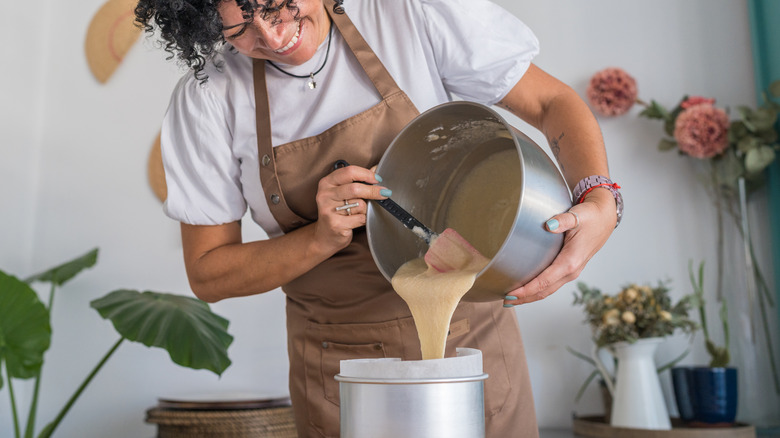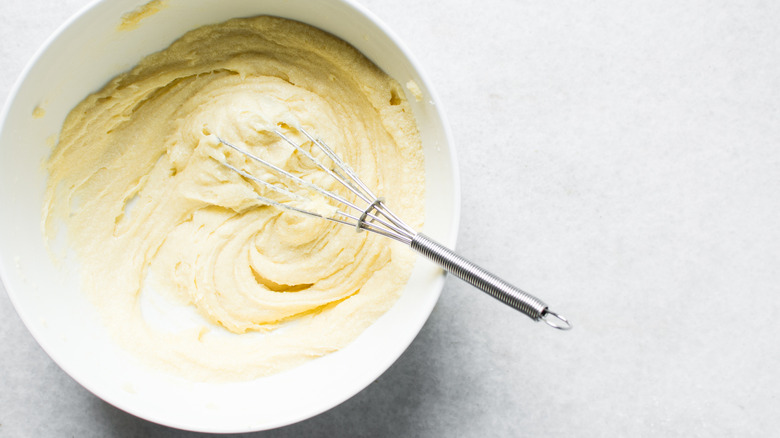Stop Overmixing Your Cake Batter With This Baking Technique
Overmixing is one of the biggest blunders you can make when baking batter-based foods. Similar to the common mistake of overmixing muffin batter, cake batter that is beaten for too long bakes up into a dessert that doesn't have the texture you're looking for — the result can be dry, gummy, flat, and tough. Luckily, the reverse creaming strategy helps you avoid this misstep. This method entails mixing softened butter (its temperature matters!) into all the dry ingredients, such as flour, rather than just into the sugar (the strategy employed in many standard cake recipes). This fairly minor change can make a profound difference in your baked goods.
According to the baker and recipe developer behind Dollop of Dough, Megan Weimer, this strategy could be your key to making cakes with immaculate textures if you're prone to overmixing the batter. "By coating the flour in fat first, you limit gluten development from the start," she explained, "Gluten starts to form when flour is hydrated, so mixing fat into the flour before adding any liquid prevents too much from forming. Less gluten results in a more tender crumb."
How to use the reverse creaming method to prevent overmixing
Ultimately, by mixing butter into your dry ingredients, you can spend less time melding all the ingredients together, thus limiting overmixing. Luckily, the strategy is as easy as it sounds: "Start by mixing the dry ingredients together, then add softened butter and beat until the mixture looks like wet sand," Megan Weimer explained. "Then add your wet ingredients (usually including milk, eggs, and vanilla). Once everything is just combined and smooth, stop mixing."
This same strategy can be used to avoid overmixing when making cookies and muffins, but it's especially beneficial for cake: "Cakes made with the reverse creaming method tend to be denser with a tight, velvety crumb." The strategy works for many of the best cake recipes you can think of, especially layered cakes or ones with fruity add-ins that require a strong structure around them. However, other cakes that are meant to have a flakier, lighter texture aren't particularly well-suited for the reverse-creaming method. "Just note that you might miss out on that super airy, fluffy texture you'd get from traditional creaming," Weimer reminded.

